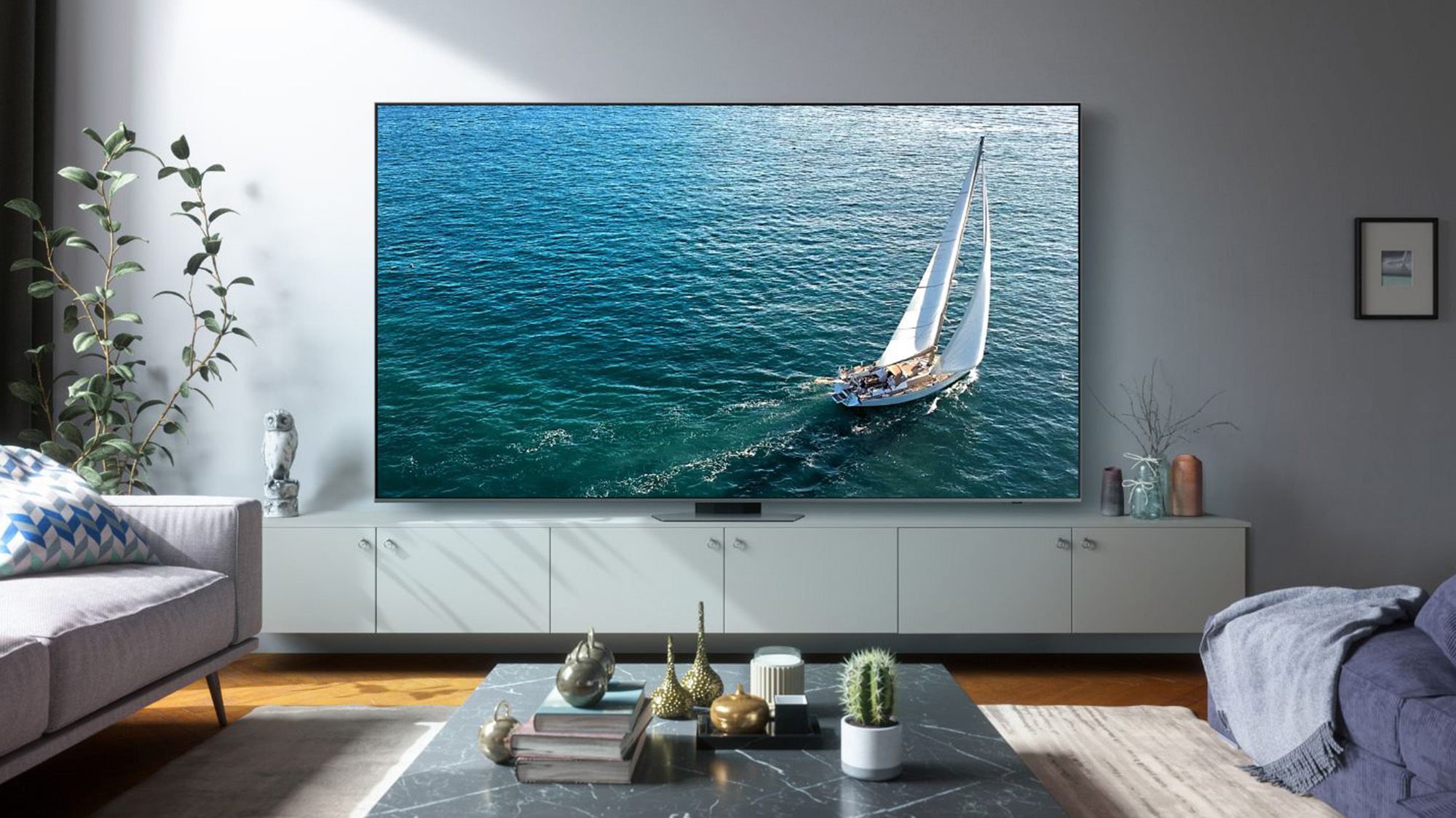
Price: $1,499
Screen size: 65-inch
Model: QN65Q80C
Resolution: 3,840x2,160
HDR: HDR10,, HDR10+, HLG
Refresh Rate: 120Hz
Ports: 4 HDMI 2.1
Audio: 40W
Smart TV Software: Tizen Smart TV
Size (without stand): 56.9 x 32.6 x 1.8
Weight (without stand): 57.5
Samsung has a legacy of making the best TVs and the Samsung Q80C QLED TV, a mid-range model from last year’s line-up, is an all-around performer in everything from the latest HDR films to fast-paced gaming.
At a current price of $1,199 for its 65-inch configuration, the Samsung Q80C QLED TV comes in as a stellar deal, too. It offers you stunning picture quality built on its dual IPS/VA panel that uses quantum dots for gorgeous color volume and improved backlighting.
Where the Q80C stumbles, though, is in its HDR support: It doesn’t offer Dolby Vision — but does come equipped with HDR10 and HDR10+ to counterbalance this downside. Because it doesn’t use Mini-LED like some of its competitors, the Q80C suffers from slight blooming in the brightest scene and no ATSC 3.0 tuner means you’re locked out of NextGen TV, which might not be a huge problem now, but has major implications down the road as it rolls out across the country.
Looking past these drawbacks, the Q80C proves itself home to several positives that make it a stand-out contender in the best QLED TV space. Against its Mini-LED competition in both TCL and Hisense, the Q80C holds strong with a powerful speaker system, color galore, and a full Game Hub that gives it well-rounded performance in the face of more budget-friendly TVs.
Samsung Q80C QLED TV review: Price and release date
Originally released in June 2023, the Samsung Q80C QLED TV sits in the upper-mid-range of Samsung’s QLED range above the Samsung Q70C and Q75C but below the Samsung Q85C and Samsung QN90C.
Prices have significantly dropped since its debut, with the 65-inch unit we tested now going for around $1,199 at most retailers, including Samsung’s own store. Launching just a bit lower than its predecessor in the Q80B, the Q80C now seals itself as quite the value among QLED offerings. It’s marked as one of the best Samsung TVs and might find itself among the best 65-inch TVs due in large part to its price to performance ratio.
- 50-inch Samsung Q80C QLED TV (QN50Q80C) — $999 ($799 on sale)
- 55-inch Samsung Q80C QLED TV (QN55Q80C) — $1,199 ($999 on sale)
- 65-inch Samsung Q80C QLED TV (QN65Q80C) — $1,499 ($1,199 on sale)
- 75-inch Samsung Q80C QLED TV (QN75Q80C) — $2,199 ($1,399 on sale)
- 85-inch Samsung Q80C QLED TV (QN85Q80C) — $3,299 ($1,799 on sale)
- 98-inch Samsung Q80C QLED TV (QN98Q80C) — $7,999 ($4,999 on sale)
As you can see, the Q80C comes in a range of sizes that makes it ideal for practically any buyer, from those looking for a smaller (and cheaper) 50-inch model to those who do actually like bigger TVs in the massive 98-inch configuration. If you’re unsure which option is right for you, you can always consult our guide on which size TV you should buy to get the model that best meets your needs.
Samsung Q80C QLED TV review: Design and ports
The Samsung Q80C QLED TV is built on a slim design with an LCD panel that uses full array local dimming and leverages the Neural Quantum Processor 4K for all things upscaling and video processing. The latter is certainly cutting-edge, but the full array local dimming screen is somewhat behind the curve, as most other manufacturers have moved on to Mini-LED lighting at this price point.
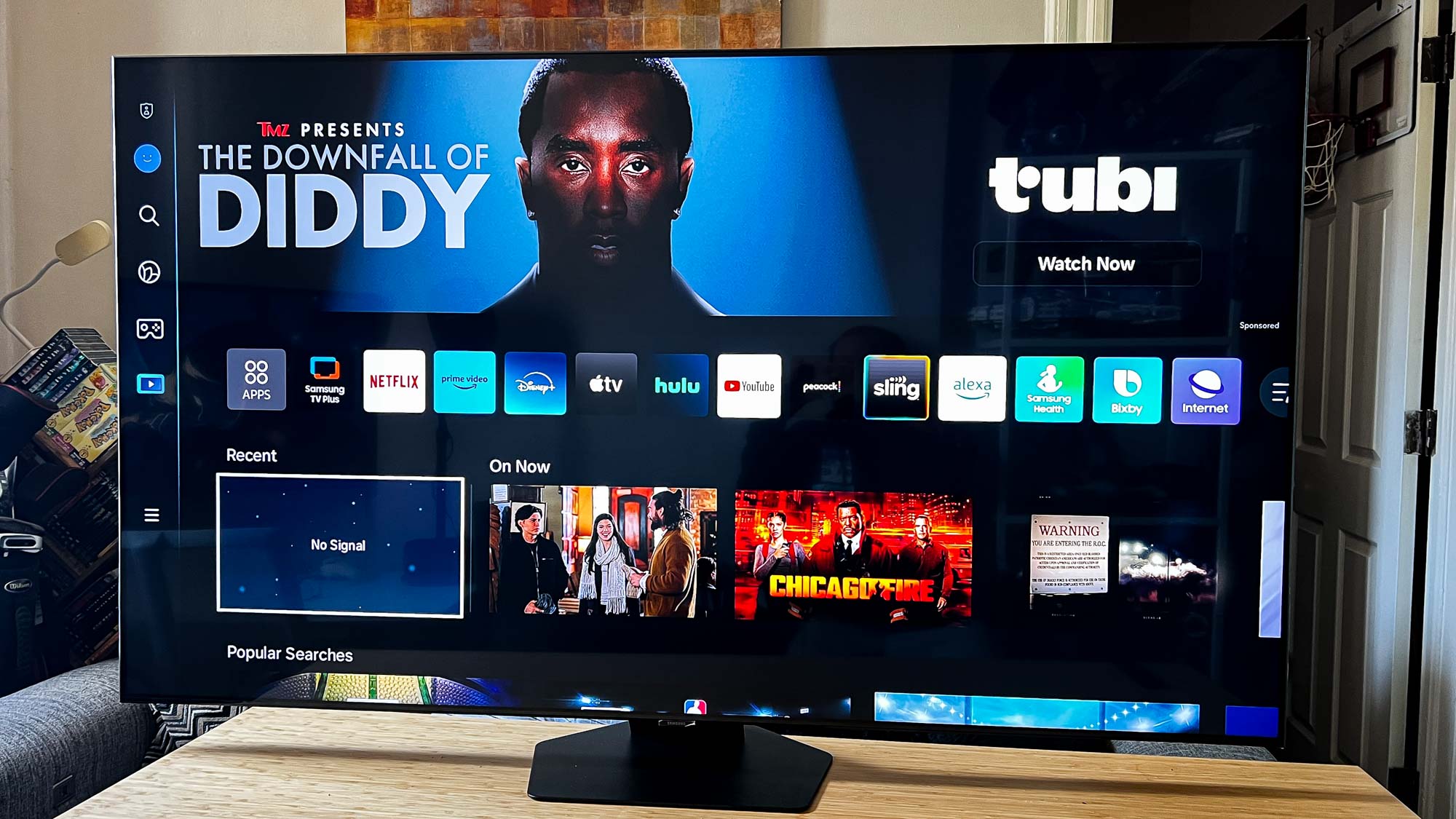
As far as weight and size, expect to have at least one other person with you when setting this TV up, as it is quite heavy at 57.5 pounds. It comes with a nifty floating stand that’s ideal for almost any surface, which means you could practically place it anywhere that has enough clearance. You could also mount it instead using its 400 x 300 VESA spec.
As for ports, the Samsung Q80C QLED TV has a total of four HDMI 2.1 inputs for unlimited gaming potential. On its native 120Hz refresh rate, those with the best gaming PCs can get the most mileage out of the Q80C with gaming set up to 120fps, no sweat.
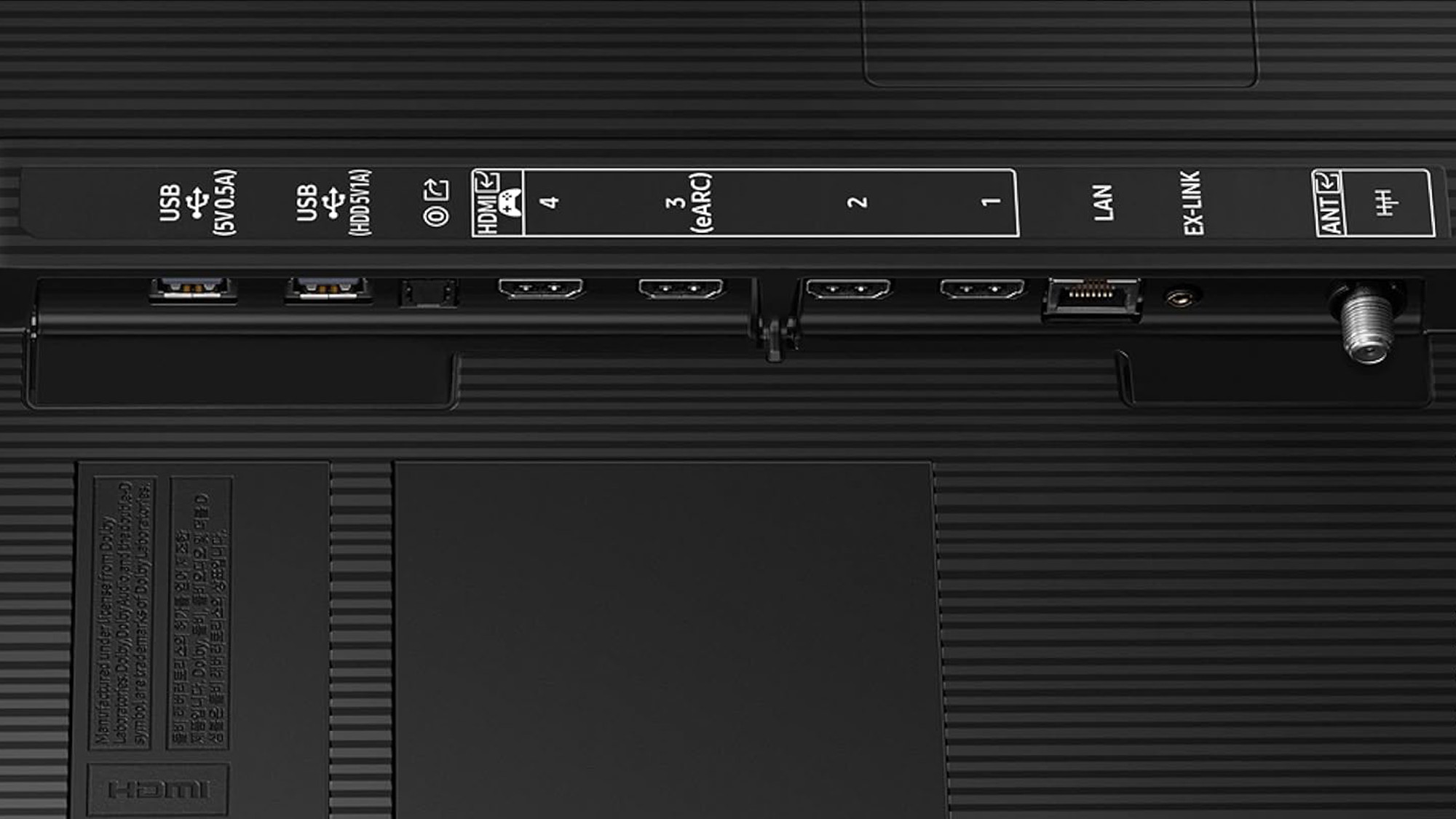
Beyond that, the Q80C also has two USB ports, one ethernet port, a digital audio out, and an RF input for those looking to pair it up with one of the best TV antennas. Unfortunately, the Q80C doesn’t come with an ATSC 3.0 tuner for NextGen TV compatibility, plus Dolby Vision isn’t supported. You will have access to HDR10, HDR10+, and HLG for all HDR content.
Samsung Q80C QLED TV review: Performance
There’s so much to love about the Q80C and its delivery of spectacular entertainment. I tried pushing the Q80C to its limits through various content from animation in the likes of Crunchyroll’s new “Kaiju No. 8,” as well as more grounded and conventional shows in Netflix’s thriller “Ripley,” Showtime’s now-finished “Billions,” and Prime Video’s “Fallout.”
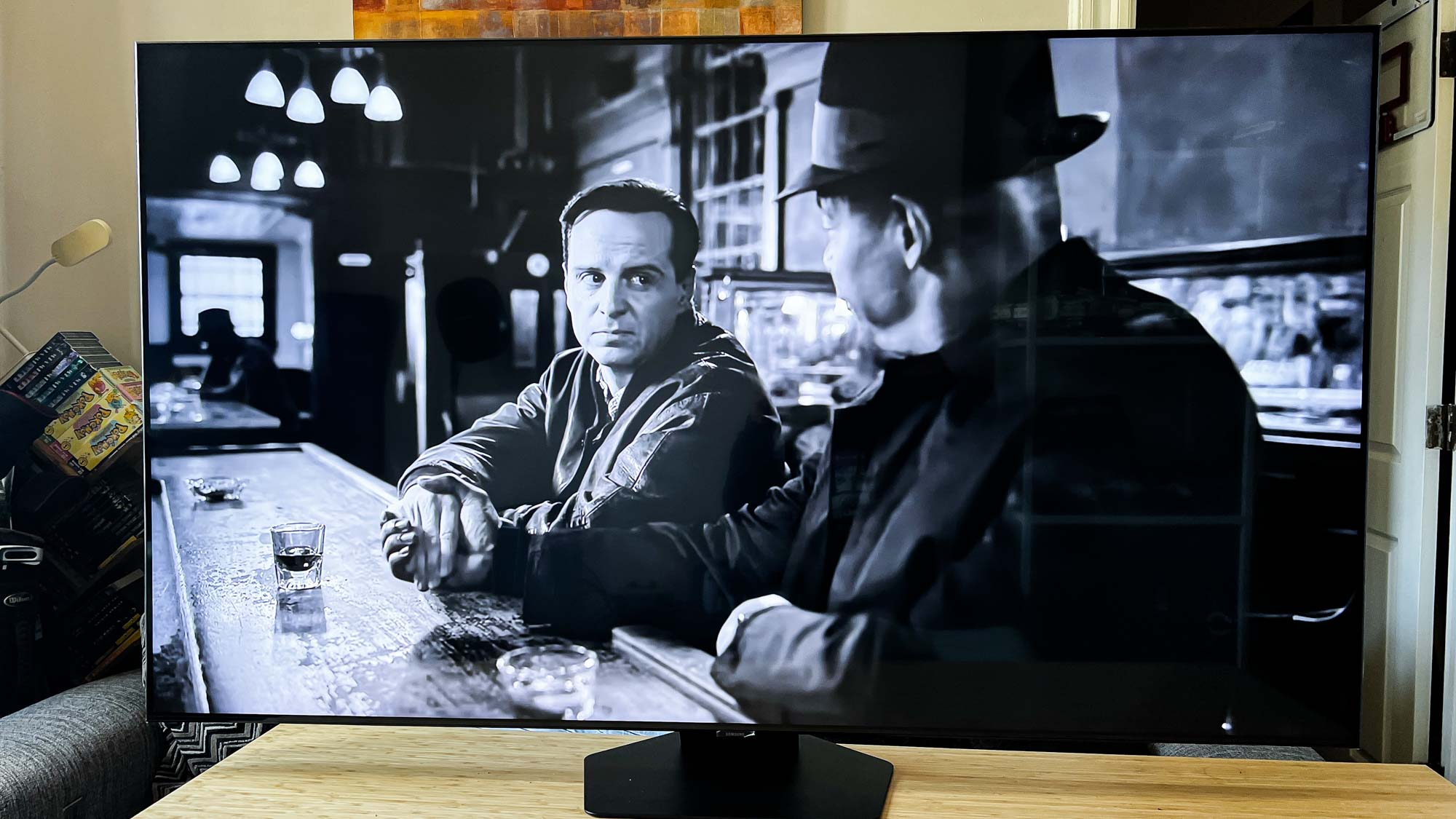
Thanks to its high brightness, the Q80C doesn’t slouch where it counts. We measured around 828.1375 nits in a 10% window for standard content, while HDR brightness proved little unchanged at around 861.4400 nits. Although it might be a tad lower than others in the space using Mini-LEDs, the Q80C still does well in dispelling reflections while the content pops on-screen.
I even had a friend ask me if the brightness was set all the way up. It wasn’t, but it should show that while the numbers might be lower for this QLED, the performance is certainly present. This can also be felt in its color accuracy, too. Animated classics like “Castle in the Sky” and “Kiki’s Delivery Service” look utterly breathtaking thanks to its 99.29% coverage of the Rec.709 gamut.
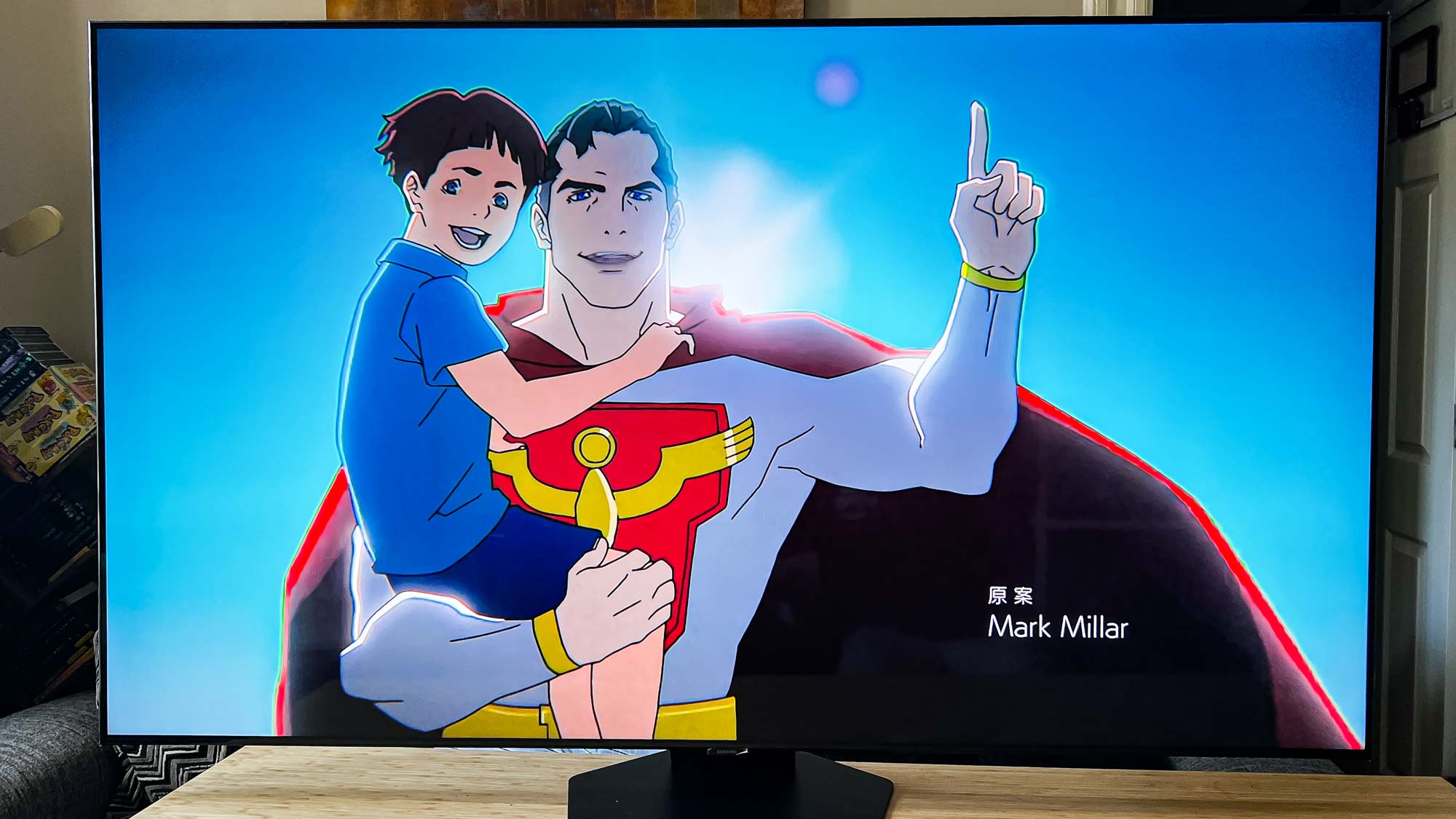
Where the Q80C takes a major hit is in its HDR coverage. As mentioned already, brightness isn’t that much improved and without Dolby Vision support, it leaves a lot of users out to dry. Its Rec.2020 gamut coverage of 68.88% isn’t horrible, but it holds the Q80C back a bit compared to the competition, as you can see on the chart below.
Samsung Q80C QLED TV review: Test results
To get some quantitative testing data we used an X-Rite i1 Pro spectrophotometer, a SpectraCal VideoForge Pro pattern generator, and Portrait Displays’ Calman calibration software to put the Hisense U8K up against its toughest competitors: the Hisense U8N, TCL QM8, and LG C3 OLED.
The Samsung Q80C puts up a valiant fight most especially against its OLED rival in the lauded LG C3 OLED. While price reflects MSRP at launch, both TVs have dropped significantly with current asking for a 65-inch C3 OLED sitting around $1,499 against the Q80C’s $1,199, making Samsung’s QLED a tough bargain to beat — especially for gamers.
The LG C3 OLED delivers slightly better out-of-the-box color accuracy (as denoted by its Delta E score, where a lower score means a TV is more accurate) as well as better color coverage in the Rec2020 and UHDA-P3 color gamuts. Still, the Q80C is brighter in SDR and HDR modes, which is helpful if you plan on putting it in a room with lots of ambient light.
Unfortunately, the Q80C can’t stand up against the high-flying numbers presented in its Mini-LED rivals. Plus, the Q80C slightly lacks in its colors on HDR content. Still, Samsung’s premium QLED TV still holds sway in its pricing and coverage against reflections, which (pun intended) isn’t reflected in the numbers.
Samsung Q80C QLED TV review: Gaming
Samsung is one of the few manufacturers in the space that gives gamers the keys to unbridled access to their favorite pastime. It’s found within the handy Game Hub, which the Q80C QLED uses to further enhance connected gaming consoles and PCs, as well as give you access to cloud gaming services from Xbox Game Pass to Nvidia’s GeForce Now.
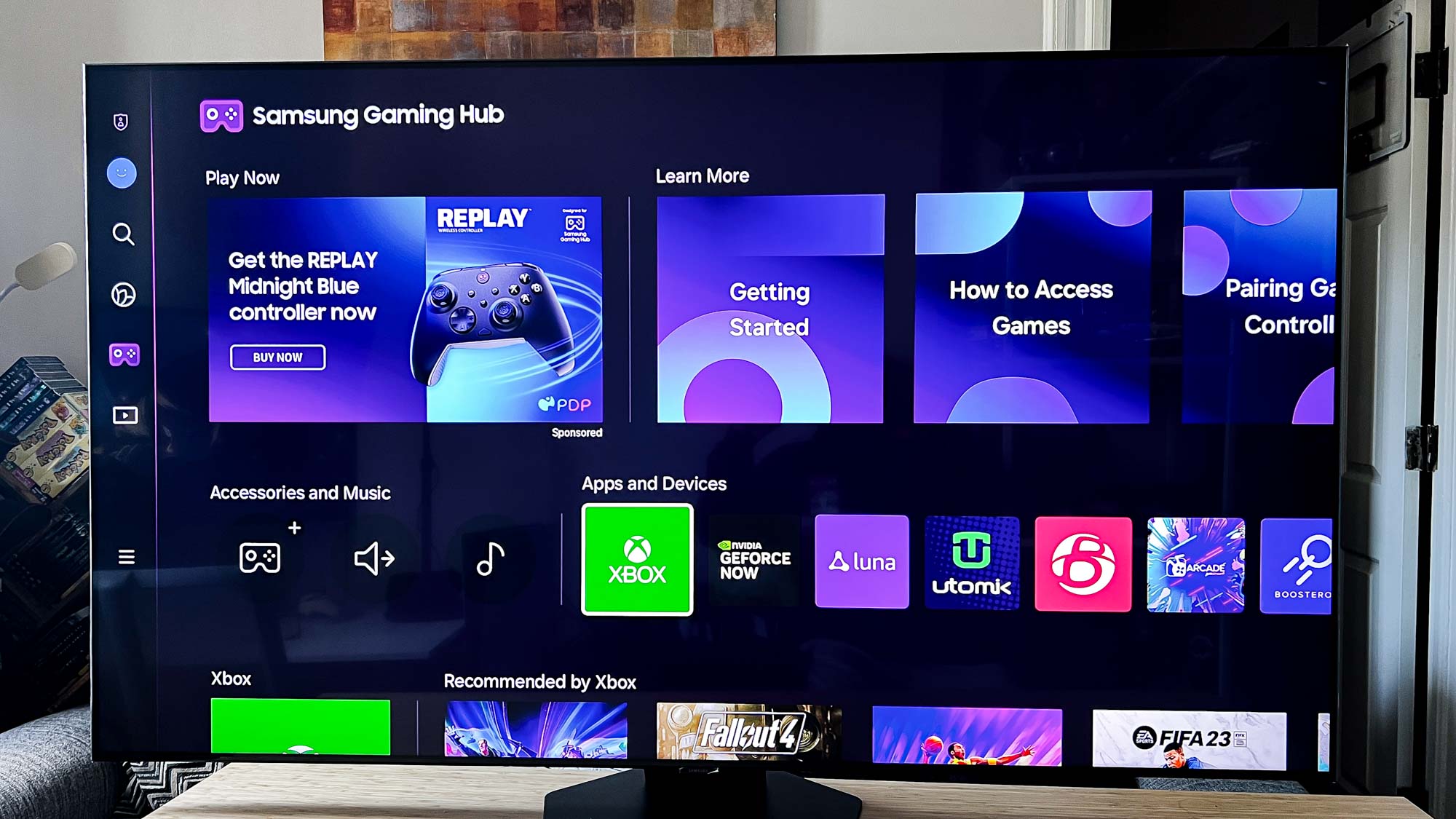
Thus, you don’t even need to own a gaming console or PC to experience fast-paced and high-flying gaming. That said, I still put the Q80C to the test with some PS5 and Steam Deck playthroughs. On PS5, I played Elden Ring and Armored Core 6, while on the handheld PC I started Dark Souls II and ran a bit of the new Sand Land experience.
These gaming sessions were stellar. It’s hard to complain about crisp and colorful 60fps gaming on the PS5, plus the Steam Deck didn’t slog either. Even in HDR, despite not having Dolby Vision support, gaming was solid on the Q80C. You can’t go wrong with a total of four HDMI 2.1 ports, plus access to both Nvidia G-Sync and AMD FreeSync easily marks this among the best gaming TVs.
Samsung Q80C QLED TV review: Audio
Though it offers a mere 40W of power built on a 2.2 channel system, the Q80C’s sound is still quite moving. Where most TVs might fall flat requiring the addition of one of the best soundbars, the Q80C doesn’t need any extra oomph.
It also has Dolby Atmos support despite skipping out on Dolby Vision, which gives audio that extra bass and clarity where necessary. Sound never was a major issue on the Q80C, which is a welcome delight as most TVs suffer in this category.
Samsung Q80C QLED TV review: Interface and apps
Like all of Samsung’s TVs, the Q80C runs on the Tizen Smart TV interface. It draws similar parallels to LG’s own in-house webOS system, with a top rail dedicated to your own personal preferences in apps and inputs, as well as a large main ad feed at the top of the main page.
While it’s not quite like the beloved Google TV system, Tizen still gets the job done. It does have some pain points — certain advanced picture settings are buried deep in the menus — but is largely crafted to meet most users’ needs and has plenty of customization to streamline content curation.
Samsung Q80C QLED TV review: Remote
Samsung’s remote is little changed across its new and older models, sporting a rather smaller design that’s super easy to grip — and somewhat easy to lose, as well. Still, while a bit smaller, the remote could do with several upgrades; namely, channel toggling isn’t as necessary an inclusion as it used to be. Plus, an input button for easy access to connected devices would make navigation a whole lot simpler.
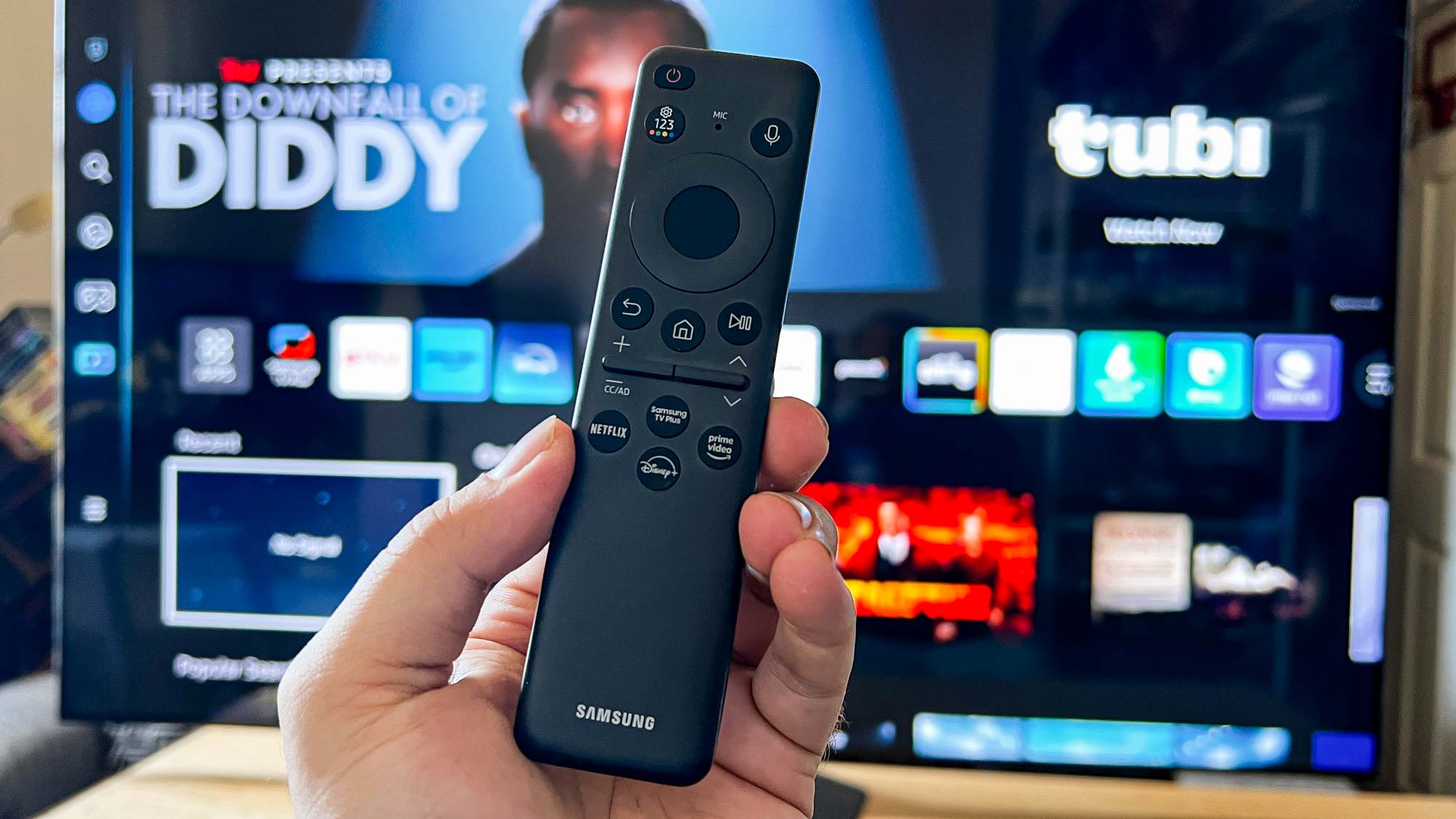
The remote comes equipped with buttons for instant access to Netflix, Disney Plus, and Amazon Prime Video. There’s also a button for Samsung TV Plus, which gives you free access to live TV — thus adding weight to the question: do you need an ATSC 3.0 tuner?
There’s little else of note on Samsung’s remote, but that’s probably a good thing. Of all the additions I’d like to see, a source button for instant-and-simple access to my connected devices is at the top of the list.
Samsung Q80C QLED TV review: Verdict
The Samsung Q80C QLED TV shines as a well-rounded entry in Samsung’s 2023 TV lineup. It’s got everything a gamer could ask for in both FreeSync and G-Sync compatibility on top of a total of four HDMI 2.1 inputs on a latency of 9.6ms — and you just can’t go wrong with Samsung Game Hub.
But beyond its stellar gaming chops, the Q80C also comes in as a strong QLED for general entertainment viewing and even music listening. Despite what it looks like on paper, its 2.2 channel 40W speaker system impressed me quite a bit, plus it offers remarkable glare coverage where most other TVs fall flat.
Admittedly, those in search of better HDR performance will find it in rival Mini-LED TVs like the TCL QM8 or Hisense U8K/N — and the lack of ATSC 3.0 means you might be upgrading in a couple of years — but you’d be sacrificing access to Samsung’s Game Hub and Tizen smart interface, both of which add substantial value.







